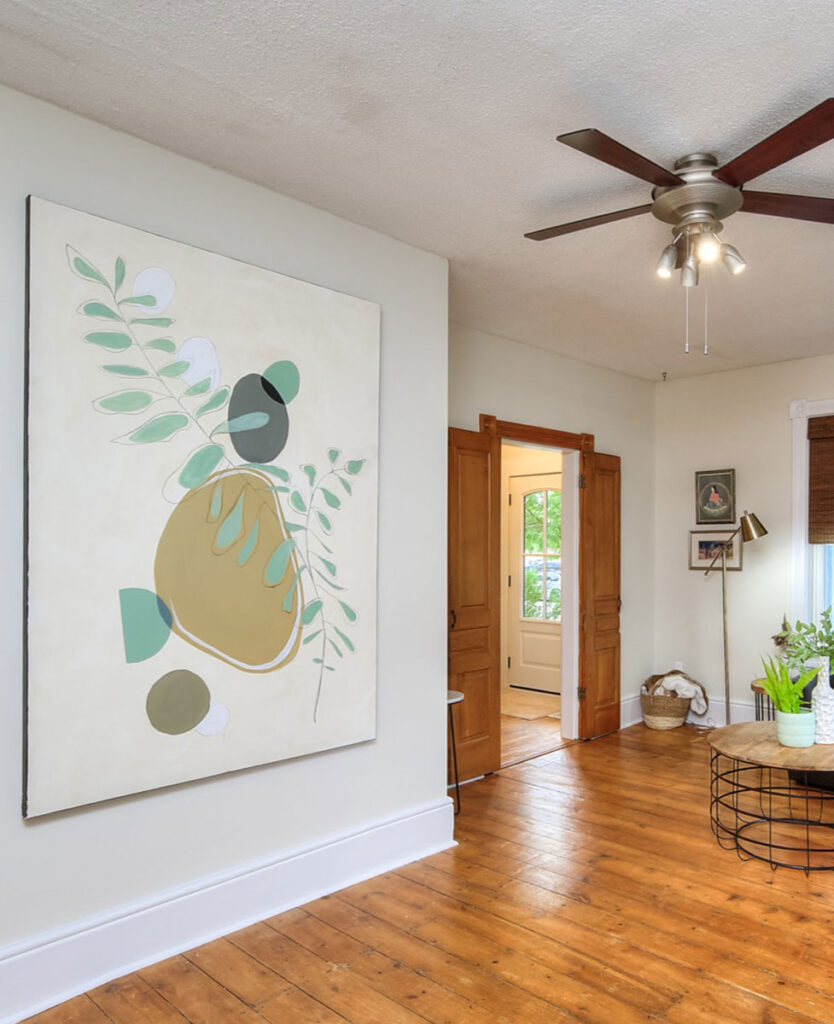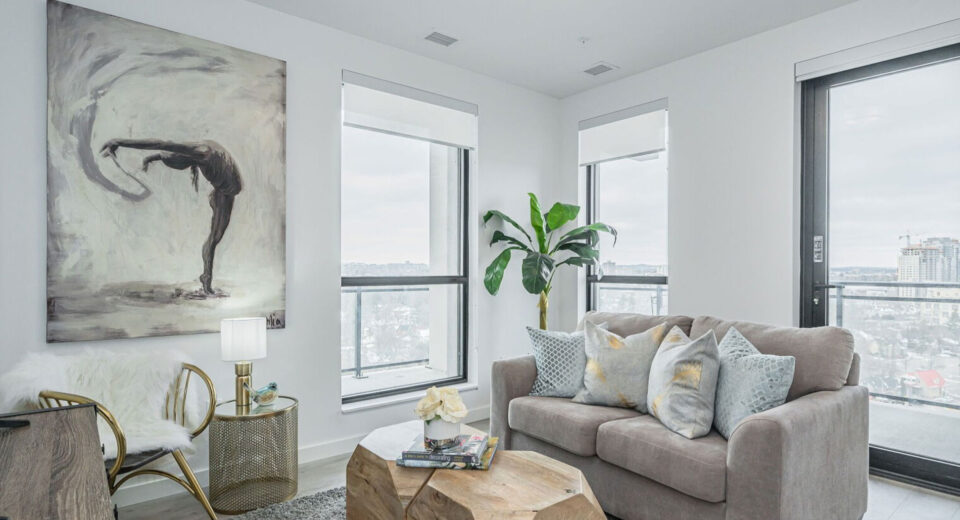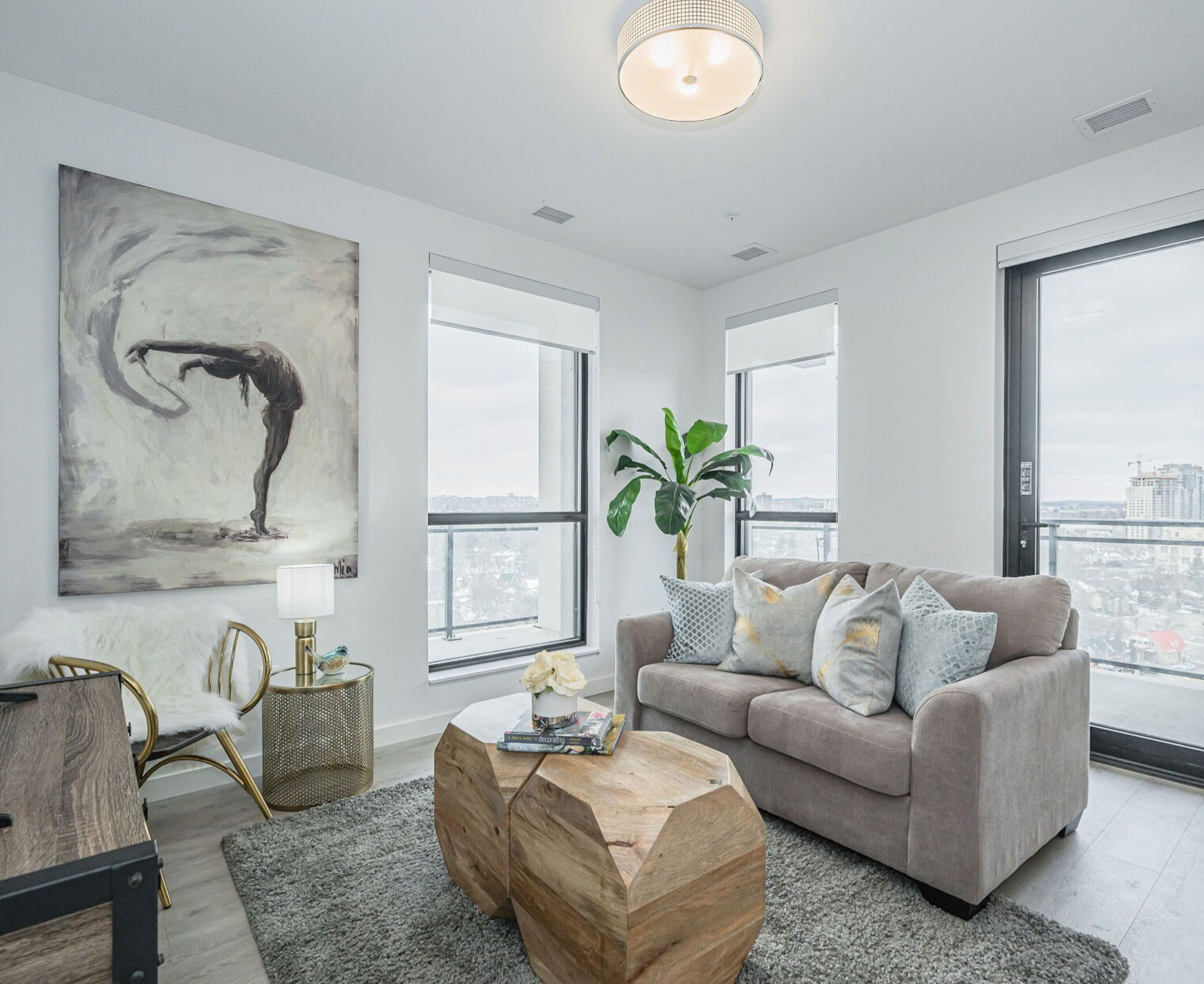You know that feeling when you walk into a room, spot a crooked picture on the wall, and suddenly, you can’t focus on anything else? Your brain is not listening to anything anyone is saying and —before you know it, you’re reaching out to straighten it, even in a stranger’s home.
But crooked art isn’t the only offense that makes a decorator’s soul cry. Nothing sends me running for my toolkit faster than a tiny picture hanging awkwardly high on a massive wall, floating aimlessly like it lost its way.
Art is one of the most powerful design elements in a space, but strange placement can lose the effect faster than a toupee in a windstorm. So here are the basic rules you can use to pull your design together and make your walls look effortlessly polished. My famously simple phrase goes like this—small art for small walls, big art for big walls. It’s almost that simple.

A massive painting over a small sofa looks awkward and unbalanced. And a tiny frame lost on a sprawling wall? It calls for company and formation. The sweet spot is where the pieces feel grounded in groupings that make logical sense. Your artwork should be about ½ to ¾ the width of the sofa, fireplace mantel, bed frame, or wall it’s paired with. Usually, I take the furniture width, multiply it by 0.6, and then I look through my inventory for something close to that size to use.
The best way to make art feel intentional is to keep it around eye level—aka, where an average-height person would naturally look. Of course, exceptions exist! In dining rooms and bedrooms, where people are sitting or lounging, you can lower your artwork a bit to create a more intimate feel. Keep things evenly spaced and avoid frames hanging higher than the door frame.
Some exceptions exist, I could not imagine putting a massive, gorgeous painting like Gustav Klimt ‘The Kiss’ on a wall with anything around it. That would make my eyes bleed. Some pieces get the space they deserve. Don’t clutter a large piece with too much furniture, busy carpets, or competing décor. Let it breathe and make the statement it was meant to make.
Design isn’t about strict formulas—it’s about how a space flows. Art is an expression of who you are, so if breaking a rule makes your space more you, then you do you Boo! But if you’re feeling lost, these simple guidelines will help you avoid any misfortunes and create a home that looks beautiful and purposeful.
Helen Fidler seeks to create beautiful spaces that evoke strong emotions in her audience. Her bold and unique visual vocabulary observes her favourite artists and architects, such as Frank Lloyd Wright and Jackson Pollock. She free-flows from surrealism into an unrestrained abstract style when she paints, which carries over into her interiors when decorating clients’ homes. “My art is an expression of how I work through the troublesome realities of this world in a way that hopes to bring beauty to everything I touch,” she explains. For her, designing gorgeous interiors and creating stimulating paintings are essential to making the world around her a more beautiful space.
- Helen Fidlerhttps://livinglocalmagazine.ca/author/helenfidler/
- Helen Fidlerhttps://livinglocalmagazine.ca/author/helenfidler/
- Helen Fidlerhttps://livinglocalmagazine.ca/author/helenfidler/
- Helen Fidlerhttps://livinglocalmagazine.ca/author/helenfidler/















